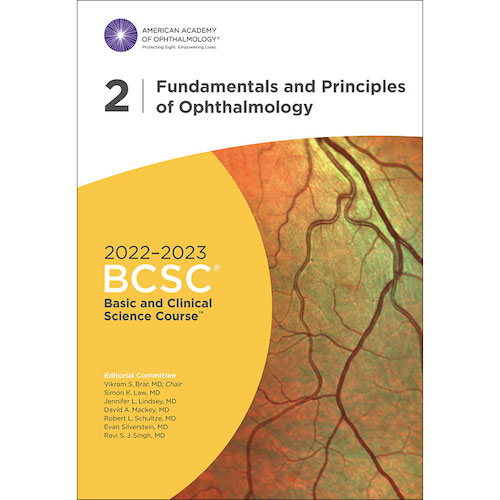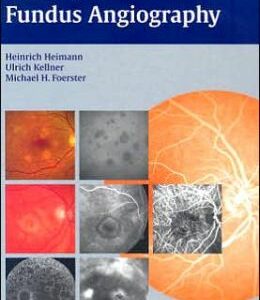No products in the cart.
Courses, General Ophthalmology, Ophthalmology Books
2022-2023 Basic and Clinical Science Course, Section 02: Fundamentals and Principles of Ophthalmology
By American Academy of Ophthalmology
Format : Original PDF + 4 Videos
File Size : 204 MB
$10.00
The “2022-2023 Basic and Clinical Science Course, Section 02: Fundamentals and Principles of Ophthalmology” is a comprehensive guidebook published by the American Academy of Ophthalmology (AAO) that covers the basics of ophthalmology.
The guidebook is designed for ophthalmology residents, practicing ophthalmologists, and other eye care professionals who are interested in gaining a better understanding of the fundamentals and principles of ophthalmology. It is divided into several chapters that cover topics such as ocular anatomy, embryology and genetics, physiology, optics and refraction, and pharmacology.
The book covers a wide range of topics related to the basic science of ophthalmology, including the anatomy and physiology of the eye, the genetics and embryology of ocular development, the optics and refraction of light, and the pharmacology of ophthalmic drugs. It provides detailed discussions of the diagnostic tools and techniques used to identify and manage ocular conditions, as well as the latest research and developments in the field of ophthalmology.
The information in the book is presented in a clear and concise manner, and is accompanied by numerous high-quality illustrations and images to enhance the reader’s understanding of the material. The guidebook also includes practical tips and recommendations for clinical practice, as well as case studies and clinical examples to illustrate the principles discussed.
Overall, the “2022-2023 Basic and Clinical Science Course, Section 02: Fundamentals and Principles of Ophthalmology” is an essential resource for anyone involved in the diagnosis and management of ocular conditions. It serves as a valuable reference for clinical practice and continuing education in ophthalmology.


![[Original PDF] Synopsis of Clinical Ophthalmology: Expert Consult – Online and Print, 3th Edition](https://ophthalmologyebooks.store/wp-content/uploads/2022/12/9780702050374.jpg)


